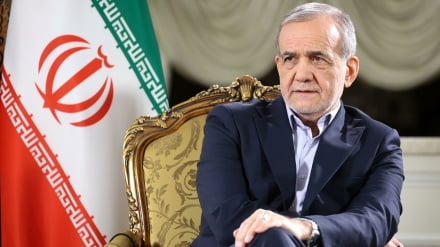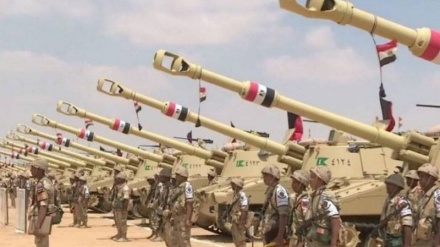No way home, no way out for Rohingya refugees
Over 3,000 Rohingya refugees in Bangladesh were supposed to return to Myanmar on August 22, a repatriation that was supposed to mark the beginning of a process to resettle hundreds of thousands who fled Myanmar military persecution two years ago.
Here we present you an interesting feature which appeared on Asia Times website, titled, “No way home, no way out for Rohingya refugees”, coauthored by journalists, Bertil Lintner and Chiang Mai.
Buses and trucks were parked outside the sprawling abysmal camps, ready to carry them back across the border. But no refugees showed up, which was hardly a surprise after UNHCR said in a statement before the scheduled return that, “So far none of those interviewed have indicated a willingness to repatriate at this time.”
And there is little reason to believe that situation will change any time soon. That likely means Bangladesh is poised to shelter what is fast-becoming a permanent refugee population of over one million Rohingyas.
The huge number of refugees is sprouting a host of problems, including rising resentment among the local population, environmental degradation in the areas where the refugees live and the possibility of radicalization among young, restless and desperate Rohingyas.
Refugee representatives said clearly long before the latest failed attempt at repatriation that they did not wish to go back unless the Rohingyas were recognized as an ethnic group, granted full Myanmar citizenship and those responsible for the carnage that forced them to flee in 2017 are brought to justice.
No Myanmar authority, from State Counsellor Aung San Suu Kyi to military leader Senior General Min Aung Hlaing, would be prepared to meet those demands. Indeed, the civilian government and military’s position on the Rohingyas’ designation is as hardline as ever.
Zaw Htay, a government spokesman who served a similar position under the previous military-backed regime, said that “action” will be taken against media and officials who had described the refugees as “nationals” in their reports or comments ahead of the failed repatriation.
The Ministry of Construction had apparently used the “nationals” term in a statement quoted by state-owned media, including the TV and radio station MRTV, the Mirror, Myanmar Alin and the Global New Light of Myanmar. The MRTV report was aired on August 12 and several newspapers ran it the next day, followed by corrections on August 14.
The UNHCR must be aware that nearly all the Rohingya refugees in Bangladesh are there to stay, despite recently giving over 500,000 of them fraud-proof, biometric identification cards, supposedly as a first step “to safeguard their way home.”
UN spokesperson Andrej Mahecic in Geneva in July told journalists: “Most of these people are stateless and most of these people have not had any form of identification document, so far the vast majority of the Rohingya refugees, this is the first ID, a first proof of identity that they have.”
What he failed to mention was that by admitting that the refugees previously had had no formal ID cards, they would also be unable to prove any previous residence in Myanmar and therefore not be eligible for repatriation as far as Myanmar authorities are concerned.
At the same time, resentment against the Rohingyas is growing in areas south of Cox’s Bazar in Bangladesh, where most of them are encamped. According to local sources, the influx of refugees – and international refugee workers – has caused a spike in prices of basic commodities.
Many locals also fear they will lose their jobs as refugees increasingly sneak out of the camps seeking work for lower-than-local wages. Forest areas near the densely populated camps have been denuded for building materials to construct homes and shelters for the refugees. Surging demand for fire wood in the camps has also devastated local forest areas.
Some refugees, desperate to eke out a living, have even been used as mules to smuggle methamphetamine from Myanmar to Bangladesh. Al Jazeera reported as early as August 2018 that the “use of drugs has risen at alarming rate, with authorities struggling to stem the flow of tens of millions of pills from Myanmar.”
While some smugglers are locals, “men living in the Bangladesh camps hosting vulnerable Rohingya refugees have also been recruited as mules,” the Qatar-based news network reported at the time.
The India-based Observer Research Foundation reported on March 15 this year that drug addiction is also rampant in the camps: “Most of the youth in the camps sit idle engaging into fights and violence within and around the camps. Perpetually, these helpless individuals fall easy prey to the drug traffickers.”
On July 25, the United Nations Development Program (UNDP) in collaboration with the Policy Research Institute (PRI) of Bangladesh released a report titled “Impacts of the Rohingya Refugee Influx on Host Communities”, which weighed the long-term effects of nearly a million refugees in a relatively small area near the Myanmar border.
For the first time, there were precise figures for the impact that many until then had only alluded to: “Prices of daily essentials have risen by about 50%, wages of day laborers had decreased, 5,500 acres of reserve forest have been decimated and 1,500 hectares of wildlife habitat destroyed.”
The report also analyzed the potential cost of repatriations if they ever do take place. In a best-case scenario, with 600 refugees returning on a daily basis, the process would take five years to complete and cost around US$3.2 billion, the research estimated.
But if the number of returnees drops to only 200 people a day, the cost would escalate to $11.6 billion and it take 13 years to repatriate the entire refugee population.
How much it would cost Bangladesh as host of the camps if none of the refugees are returned to Myanmar was not mentioned in the UNDP/PRI report – and that now appears to be the most likely – and from Dhaka’s perspective – worst case scenario.
Those with money and relatives abroad may be able to buy genuine Bangladesh passports and leave for third countries, while others may pay unscrupulous smugglers to take them by boat to Malaysia or Indonesia.
The possible radicalization of young Rohingyas was covered in an April report by the International Crisis Group (ICG), which concluded that no evidence has emerged of the Islamic schools, or madrasas, in the camps promoting violence or intolerance among refugee children.
Nor did the ICG research find that traditional extremist organizations had been able to recruit them, but “a policy of denying young people formal education and leaving them reliant on unregulated madrasas almost certainly increases the risk of such groups gaining a foothold in the camps.”
At the same time, and somewhat contradictory, the ICG report went on to say that “already, the Chattogram-based Hefazat-e-Islam group– which has publicly called for jihad against Myanmar – has considerable influence over the madrasa networks in the camps, through the funding and religious scholars that it provides.”
Since April, Chattogram is the new name for the port city of Chittagong.
What that means for neighboring Myanmar – and the wider region – is too early to say. But the latest failed repatriation and the visceral reactions to the attempt from both the refugees and Myanmar authorities is an early sign of an intractable situation that will only lead to more social and communal problems in Bangladesh.
SS/SS


